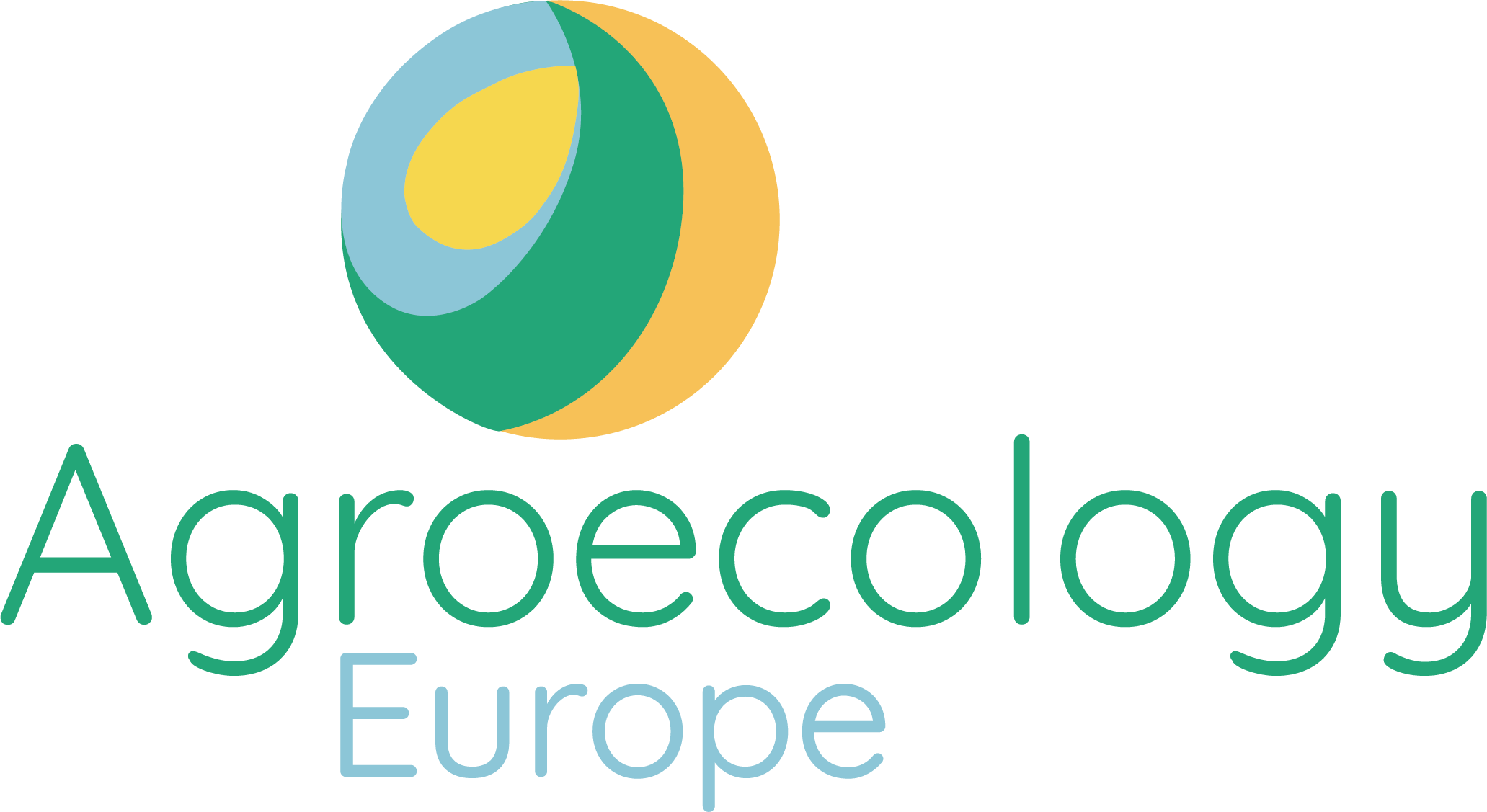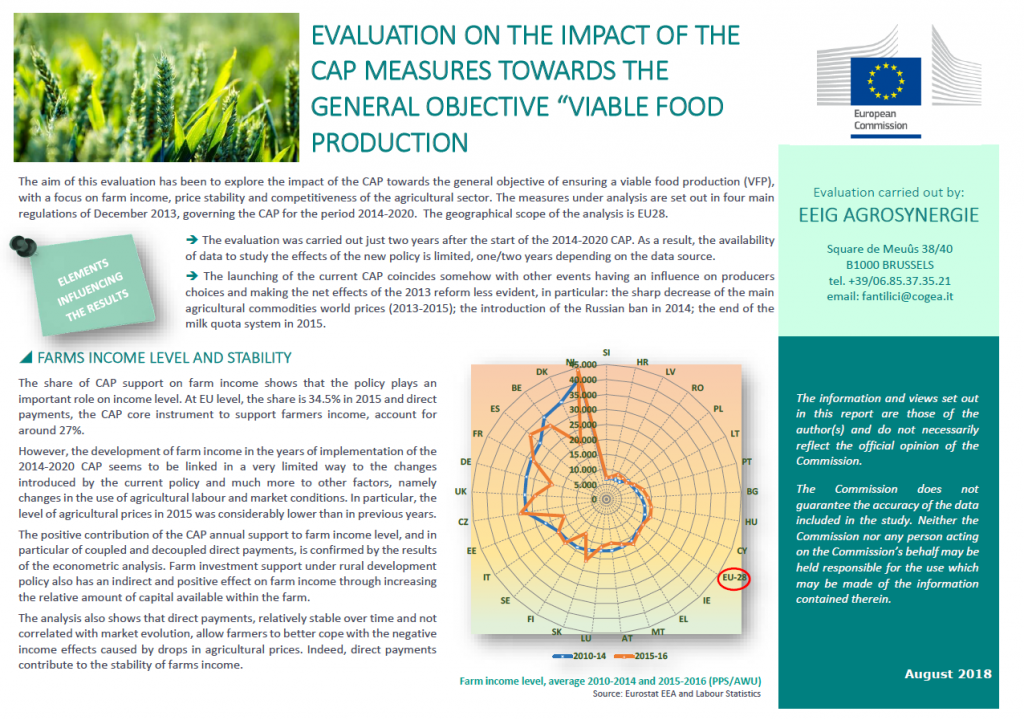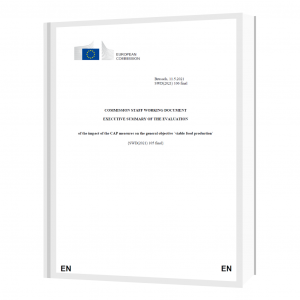The 2014-2020 CAP includes viable food production with a focus on agricultural income, agricultural productivity and price stability as one of the three general CAP objectives. An evaluation of the CAP’s impact on viable food production including its key findings was published on the 12th of May by the European Commission.
The evaluation gives insight on the CAPs impact on 16 areas namely:
- Farm’s income level and stability
- External convergence and the disparity of direct support between the Member States
- Internal convergence and the disparity of direct support among farmers
- The efficiency of direct payments in targeting appropriate recipients
- The effects of new targeting elements of direct payments on farm income
- The role of CAP measures on job maintenance and/or creation in the farm sector and the food processing industry
- The competitive position of the European farm sector
- Effects of the voluntary coupled support on the competitiveness of supported sectors
- Effects of the voluntary coupled support on the competitiveness of the processing industry
- Effects of EAFRD measures supporting knowledge, advisory services and cooperation on the competitiveness of the agricultural sector
- Effects of market measures on the stabilisation of domestic market prices
- Effects of market measures on farmers production decisions
- Relevance of the CAP specific objectives related to viable food production with respect to the actual needs
- The efficiency of the administrative procedures
- Coherence of the CAP measures addressing viable food production
- EU added value of the CAP measures
Towards the general objective ‘viable food production’ the evaluation results in a generally positive conclusion of the CAP’s impact but indicates room for improvements. Among others, a more effective coupled support in terms of purpose and competitiveness, better targeting of income support by the Member States and tools for agricultural markets stabilisation. Furthermore, administrative and management efficiency of greening payments and the rules of defining active farmers require enhancements.
Positively assessed was the direct income, as it contributes to the stabilisation of farm income, thereby allowing farmers to better cope with negative effects caused by drops in agricultural prices.
The current CAP was evaluated as effective in shifting direct income support towards farms in the Members States with lower levels of support per hectare compared to the EU average, reducing the disparity among the Member States. For internal convergence among farmers, the current CAP is generally evaluated effectively in reducing disparities between farmers in the Member States.
Redistributive payments show favourable income of small farms. Young farmer payments so far played a limited role in the turn-over of farms management, but farms managed by young holders have increased between 2013 and 2015.
The competitive position of the EU farm sector in the internal market has gradually weakened over the long run, showing that EU consumption is increasingly satisfied by imports. In international markets, EU exports increased in value but at a lower rate than the world, trade has increased. The EU exports have a robust orientation towards high value-added products, which increased slightly after the current CAP implementation.
Finally, the evaluation highlighted that the higher complexity of CAP measures and the limited number of beneficiaries of certain members have led to the perception of increased administrative costs.
The recommendations based on the evaluation include among others identifying assignment criteria and instruments to redistribute direct payments more efficiently; identifying procedures to avoid ineffective use of voluntary coupled support; more flexibility in the greening payments according to national needs. Furthermore, the evaluation concludes that coherence of the CAP requires close monitoring, in particular regarding the increased flexibility in the implementation of the future CAP and the Farm to Fork and Biodiversity Strategies’ objectives.


